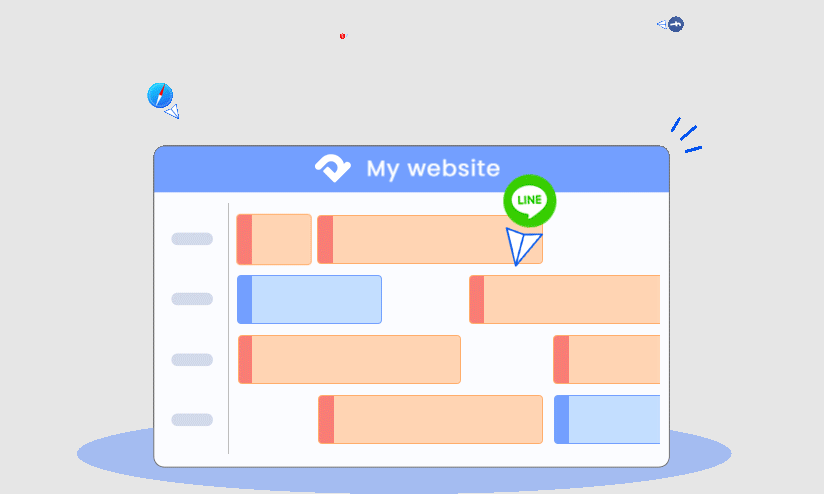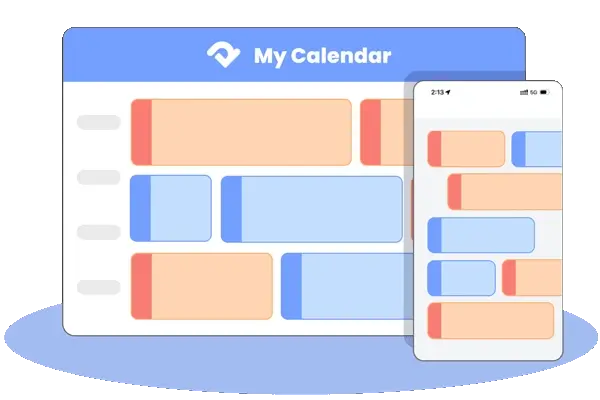Introduction
Are you paying more than 15% in OTA commissions? If you are using a property management system, or a PMS, you can save this amount of money and this could be the key to reclaiming your profits through direct bookings from the guests.
OTAs like Booking.com, Expedia or Agoda have dominated the hotel booking industry for years. They claim high commissions from hotel or property owners and that eats much of your profits. As the hotel grows, they are now trying to get rid of that. The good news now is that a modern hotel PMS can help property owners shift bookings from OTAs to their website, where they keep 100% of your revenue while still maintaining your visibility on OTA channels.
If you are still looking for more info about PMS, follow this guide and learn more. In this guide, you will learn:
- The True Price of Relying on OTAs: Commissions + Hidden Costs
- How can PMS drive direct bookings to your property
- 5 Proven Strategies to Shift Bookings from OTAs to Your Website
- Technical Setup Guide
Follow this guide, and by the end, you’ll have actionable steps to increase direct bookings, avoid high commissions fees from OTA channels, reduce costs, and also strengthen guest relationships.
The True Price of Relying on OTAs: Commissions + Hidden Costs
OTAs usually charge 15%-30% per booking, which is a really high cost. But the hidden costs go far beyond commissions:
1. Rate Parity Restrictions
Many OTA channels enforce rate parity clauses, preventing you from offering lower prices on your website or other channels.
2. Brand Dilution
Guests who book via OTAs often remember the platform, not your hotel. This erodes brand loyalty and reduces repeat bookings—critical for small hotels relying on local or returning guests.
3. Limited Guest Data
Once the OTA owns all guest information, it's hard for hotel or property owners to personalize marketing and encourage guests to come to stay more times.
How can we solve this? This is when PMS comes into play. Use the PMS system to help you balance OTA distribution and prioritize direct bookings on your own website.
How PMS Tools Drive Direct Bookings
A PMS does far more than manage check-ins and check-outs. For small hotels, it’s a revenue-driving tool that streamlines operations and boosts direct bookings. Here’s how:
1. Built-in Booking Engine
- Seamless Independent Website Integration – Use a PMS to launch an independent website for your property. The PMS helps to solve all from opening a website while listing all the info the guests need to help you sell.
- Mobile-Optimized Flows – The mobile experience needs to be good as well. The PMS also ensures smooth smartphone booking (over 60% of bookings happen on mobile).
- Real-Time Availability – You distribute listings to many channels from OTA to your website and more. Bookings come into the system at any time. Avoid overbookings with instant sync between your PMS and website.
2. Rate Parity Management
Instead of undercutting OTAs (which violates agreements), you can offer exclusive offers for direct bookings. Here are some tactics:
- Offer free breakfast
- Upgrade room for direct bookings
- Allow late check-out
3. Guest Data Utilization
- CRM Features – With direct booking information, you can obtain much of the guests' info, including tracking repeat guests and their preferences.
- Automated Email/SMS Campaigns – Knowing guests' email addresses or phone numbers, you can send personalized offers post-stay to encourage direct rebooking. The emails and SMS campaigns can also be set in the PMS and be sent automatically.
4. Channel Manager Benefits
- Smart Availability Controls – If you want to prioritize your own website, you can allocate a portion of rooms for direct bookings first.
- Automated OTA Sync – All bookings from OTA channels and your own website will be reflected in the PMS calendar. In this way, it prevents overbookings while pushing guests to book directly.
5 Proven Strategies to Shift Bookings from OTAs to Your Website
1. Implement a PMS-Powered Loyalty Program
- You can offer points or small rewards for direct bookings. When the guests book the next time, they can use these rewards to redeem nights or upgrade their rooms. For example, encourage guests to book directly and earn 10% back in rewards.
2. Create "Direct Booking Only" Perks
- Create some exclusive benefits for direct guests. For example, you can offer complimentary welcome drinks when the guests arrive. Offer free Wi-Fi (while OTAs may charge extra) for direct guests only. Offer late check-out or priority early check-in for them.
3. Leverage Post-Stay Marketing
- When the guests come directly, you own their info for future marketing possibilities. The PMS usually provides CRM tools to help to manage and automate CRM campaigns. Set and automate campaigns like thank-you emails with a discount for their next day or send SMS occasionally for repeat bookings.
4. Optimize Your Booking Engine
- 1-Click Booking – The booking website should be as simple as possible. The steps in the checkout process should be minimized to reduce abandonment rates.
- Transparent Pricing – Display all costs upfront, including taxes and fees, to avoid last-minute surprises that lead to cart abandonment. Communicate value-adds like free breakfast or WiFi.
- Trust Badges – Show some security indicators to let your guests build trust. This includes SSL encryption certification, clear refund/cancellation policies, payment method logos (Visa, PayPal, etc.), and guest review highlights.
5. Train Staff on Direct Booking Conversion
- Train staff to promote direct bookings: Equip your team with simple scripts, e.g., ‘Booking direct gets you a free welcome drink—would you like help booking your next stay?’ Offer small bonuses for every direct booking they encourage.
- Draft some email templates to highlight direct booking benefits. The templates can be drafted in the system.
Technical Setup Guide
Step 1: Choose a PMS with a Robust Booking Engine
Look for a PMS that offers a booking engine function. It usually helps you build a website directly and it's super easy to set up the info in it. The PMS should also be mobile-friendly. The mobile design should be user-friendly. Automatic sync with OTAs to avoid overbookings.
Step 2: Integrate with Your Website
Many PMS providers offer no-code plugins for WordPress, Wix, or Shopify. Try them out before you officially use them. You can test the booking flow on both mobile and desktop.
Step 3: Set Up Rate Parity-Compliant Packages
Instead of lowering prices, add value-added bundles (e.g., "Romance Package" with champagne). This is easily realizable through your direct booking.
Step 4: Configure Automated Guest Communications
Set up automated communication such as post-booking confirmation emails and post-stay thank-you emails with loyalty incentives. Email drafts can be set up as templates in the PMS.
Step 5: Monitor Conversion Metrics Monthly
One of the big advantages of using PMS is that everything is trackable. Especially the data. Track direct booking % growth, OTA channel booking distribution, OTA commission savings, and repeat guest rate. You can explore more with the reports and analysis function.
Conclusion + Next Steps
For small hotels, a PMS is more than software—it’s a partner in cutting costs and building direct relationships. Follow these steps to reduce OTA commissions, keep more revenue, and turn guests into loyal advocates. Ready to get started? Choose a PMS that fits your size and goals, and watch your direct bookings grow.

